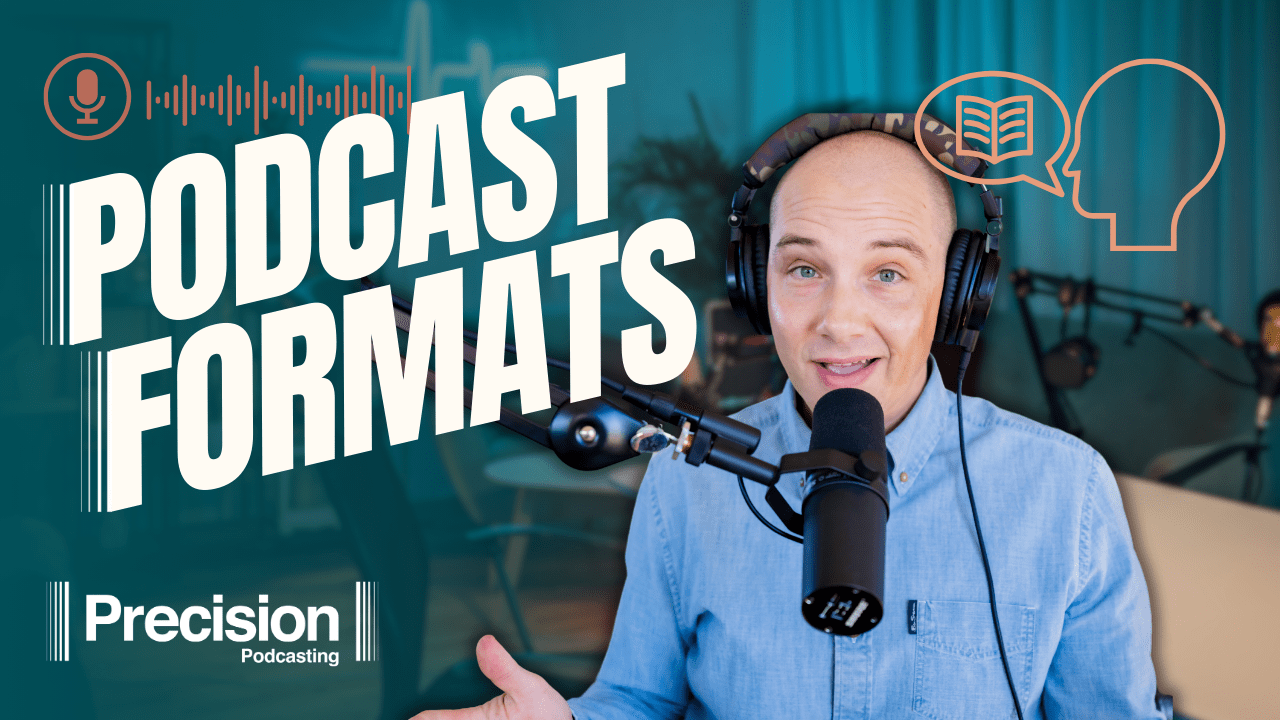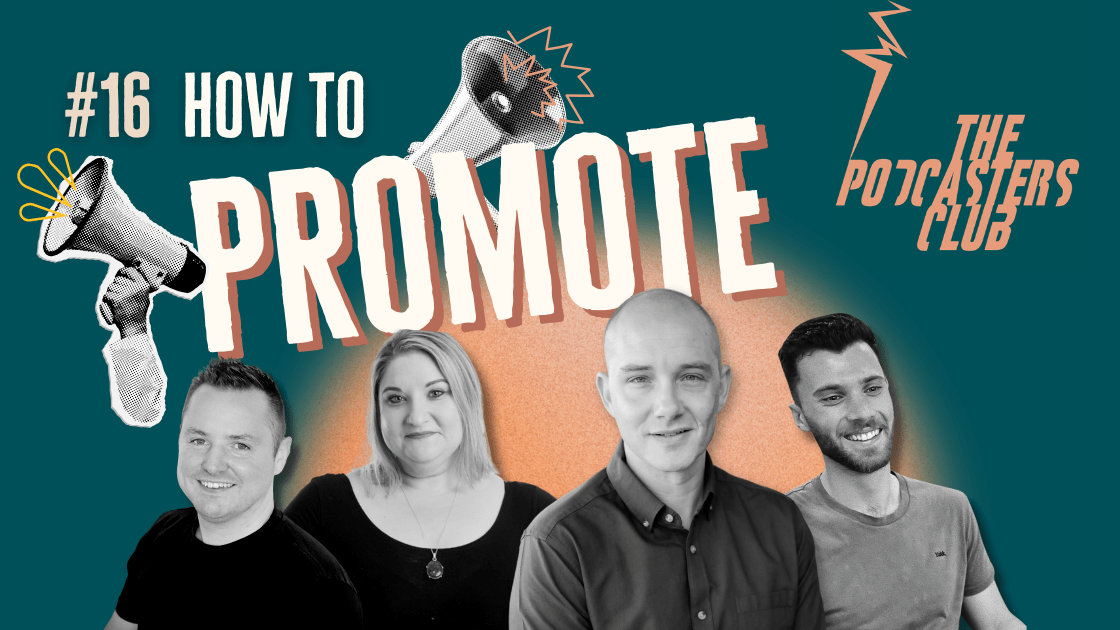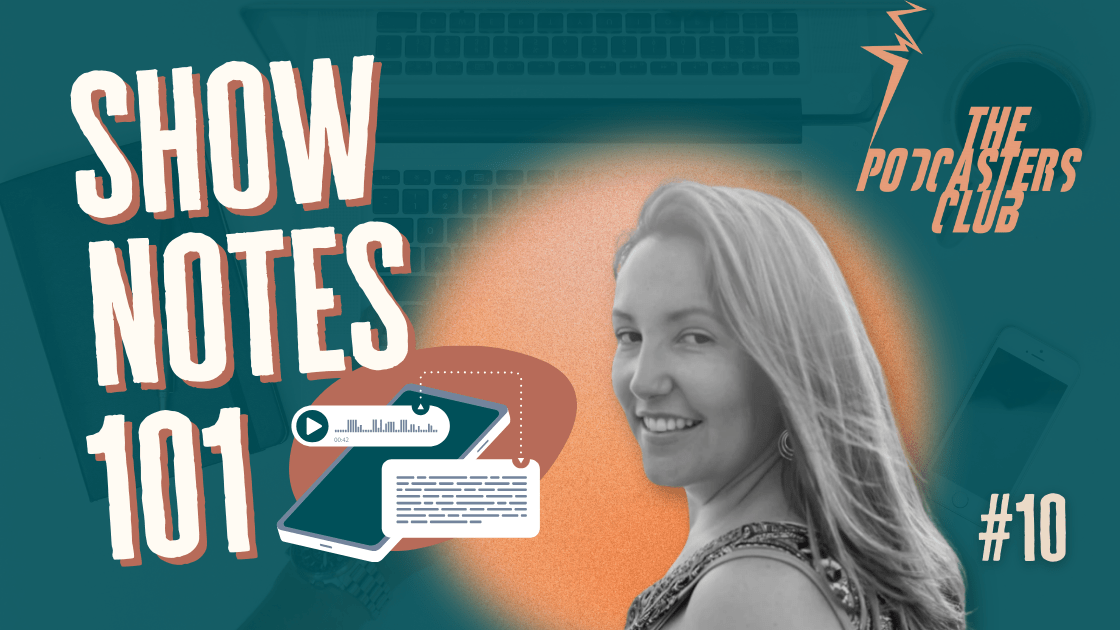Repurposing Power: Get the Most From Your Podcast Content
The world of podcasting thrives on fresh, engaging content. But how do you consistently release valuable episodes as well as promoting it and engaging your followers on your various media profiles?
Finding the time to create all the additional content to keep every social media and online channel current can be overwhelming. That’s where content repurposing comes in.
This guide delves into the art of repurposing your podcast, empowering you to maximize its reach and engagement across various platforms.
The Benefits of Repurposing
Repurposing your existing podcast content offers a multitude of advantages:
Extended Reach: Expand your audience by reaching new listeners who might not typically discover your podcast. Social media platforms, blog posts, and even video content can attract a wider audience demographic.
Increased Engagement: Keep your audience engaged between episodes by offering them bite-sized content derived from your podcast.
SEO Boost: By strategically repurposing your content with relevant keywords and descriptions, you can improve your podcast's search engine ranking, making it easier for new listeners to find you.
Content Diversity: Repurposing offers a way to present your content in new formats, catering to different audience preferences. Some listeners might prefer audio, while others might enjoy written summaries or visually engaging video snippets.
Maximizes Content Value: By repurposing, you extend the lifespan and value of your podcast content, ensuring you get the most out of your hard work and podcast budget.
Repurposing Strategies: A Content Buffet
The possibilities are endless when it comes to repurposing your podcast content. Here are some popular and effective methods:
Blog Posts: Craft enticing blog posts based on your podcast episodes, featuring key takeaways, interview highlights, or thought-provoking questions. Include audio clips or episode transcripts to enhance the written content.
Social Media Snippets: Create short, engaging social media clips that capture the essence of your podcast. Use platforms like Instagram Reels, TikTok, or YouTube Shorts to reach a wider audience and pique their interest in your full episodes.
Infographics and Slide Decks: Visually represent compelling data or statistics discussed in your podcast. These visuals are perfect for social media sharing and blog posts.
Quote Graphics: Highlight insightful quotes or episode soundbites with visually appealing graphics. Share them on social media to spark conversation and promote your podcast.
Ebooks and Courses: Compile your podcast content into an e-book or online course, offering listeners a deeper dive into the topics covered. This can be a great revenue stream as well.
Optimising Your Repurposed Content for Success
Here are some key considerations to ensure your repurposed content shines:
Target Audience: Tailor your repurposed content to the specific platform and its audience. For example, social media snippets should be concise and attention-grabbing, while blog posts can offer more in-depth analysis. Discover how to target your audience efficiently in this podcast episode.
SEO Optimization: Integrate relevant keywords and descriptive titles to improve the discoverability of your repurposed content on search engines and social media platforms.
Strong Calls to Action (CTAs): Encourage engagement by including clear calls to action, whether it's directing viewers to subscribe to your podcast, visit your website, or follow you on social media.
Maintaining Brand Consistency: Ensure your repurposed content reflects your overall brand identity through consistent visuals, tone of voice, and messaging. Discover 10 reasons why brands should start a podcast in this article.
How to Repurpose Your Podcast - in 4 Steps.
Step 1: Pre-production.
Where are you going to publish this? Is it going to be on your website? Is it going to be an article on LinkedIn? Are you going to submit it to an industry publication? Are you going to try to get it in mainstream media?
The reason you want to think about publishing location first is because it's going to dictate how you write it. For example, a lot of publications have submission criteria and they want the article to be in a certain format. Things like word count, headline conventions etc.
So decide where you're going to publish and make your content fit.
Step 2: Listen back.
Actually listen to the episode, even if it's an episode that you recorded.
You might remember a certain thing that really stuck out from the conversation, but there might be a whole lot of other gems that you've forgotten. So I would definitely advise listening to the full episode, preferably with a transcript in front of you - basically highlighting the important points.
The key is to think about this through the ears of your listener, or lens of your reader. Think about who the end person is.
They’re probably going to have a similar perspective to yours, but there might be subtle differences in what you find interesting versus what they find really interesting.
Step 3: Structure.
The third step would be to actually sit down, write, structure and order the piece. This is really where the writing process kicks in because you're thinking almost like a journalist would; highlighting the parts of the conversation most interesting for the audience you’re trying to reach.
You're organizing the information into a basic structure; an introduction and then the three to five main points, and maybe dividing that into subheadings and then writing up what you learned, what you heard.
So again, thinking through what's going to be most important for your audience and the terms and buzzwords that they're going to respond to.
Step 4: Edit and Refine.
This is where you would put the buzzwords in. If you're thinking about SEO and keyword research, you would strategically incorporate it here.
All content, whether it's audio, video or text, is a lot more powerful if it's edited, and that doesn't mean that you have to hire an editor. Even if you just write it one day, go to sleep, and the next day you take a look and you self-edit; that's a great thing to do because I guarantee you, when you look at it the next day, you'll find ways to improve.
Repurposing with Tech Tools
The world of content creation is abuzz with innovative tools, and repurposing your podcast is no exception. Consider leveraging AI transcription services like Otter, Temi, or Descript to expedite the process of transforming your spoken content into written text. These tools can be a lifesaver, especially when churning out blog posts or social media captions based on your podcast episodes.
AI writing assistants are also making waves, and some creators swear by their ability to refine and enhance drafts. While we recommend maintaining a human touch in your content, exploring these tools for headline generation can be valuable. Platforms like CoSchedule offer headline analysers that assess emotional impact and suggest improvements for better click-through rates. Remember, your headlines are the trailers to your podcast – make them count!
Embrace the Repurposing Revolution!
By embracing repurposing strategies, you can transform your existing podcast content into a powerful tool for audience growth and engagement. Remember, the key lies in understanding your audience, tailoring your content for different platforms, and maintaining a consistent brand voice. Start repurposing today to capitalise on the awesome content you’re making.
Ready to propel your podcast to success? Hire the podcast editing experts with a track record of #1-charting episodes.





![Podcast Perfection: The Difference Mastering Makes [with audio examples]](https://images.squarespace-cdn.com/content/v1/6632edd588483f6e2a0bc4fa/1715541221604-A295QS3ZCR90MP2GSZ6W/Podcast-Mastering-PrecisionPodcasting.png)




![10 Reasons to Launch a Business Podcast in 2024 [with NZ case-study]](https://images.squarespace-cdn.com/content/v1/6632edd588483f6e2a0bc4fa/1715541120046-G4ZOJ6L41KBUCY9A7GZS/Launch-a-Podcast-PrecisionPodcasting.png)
![The Power of Podcast Editing [with examples].](https://images.squarespace-cdn.com/content/v1/6632edd588483f6e2a0bc4fa/1715541140779-2O033HV3Z7EV0LYYJBET/Podcast-editing-PrecisionPodcasting.png)













![Blue Yeti X: The Podcaster's Workhorse? [review]](https://images.squarespace-cdn.com/content/v1/6632edd588483f6e2a0bc4fa/1715812288019-HMB8SFWJ6GEWX4OY9NIS/The-Podcasters-Club-Ep12-Blue-Yeti-Review-min.png)










